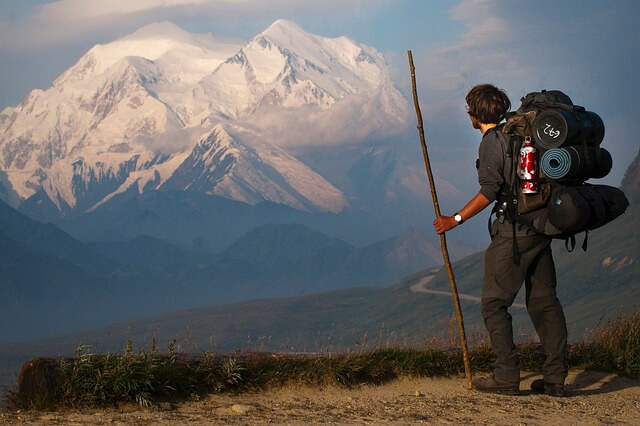
If you’re looking for a different kind of vacation, where you can get to be one with nature instead of just visiting common tourist attraction with hundreds of other people, jungle trekking will be perfect for you.
Jungle trekking allows you to observe nature closely. It’s thrilling and adventurous. You can experience nature in its most native state.
You can easily find jungle trekking offered in the most exotic places of the world, from the wild Amazon to the sacred old rain forest in Asia.
During the trekking you’ll easily spots colorful insects of various sizes to exotic plants that don’t look like plants at all!
For such an adventure, you have to understand that it is not the same like having an vacation in a seaside resort.

The situation around you will be very much different. There will be no other people except your group and there is no facilities such as tap water or hospital.
That’s why, you should not take the preparation for jungle trekking lightly. Way before you even fly to your destination, there are a lot preparation to do.
However, don’t let the extra preparation deter you from experiencing one of the best adventures in your life!
We’ve compiled a checklist to help you keeping track of your preparation for your jungle trekking. With this checklist, you won’t miss any important preparation!
Checklist Before Leaving the Country
1. Consult your General Practitioner
Usually, jungle trekking is offered in tropical areas. Therefore, you should be aware of common tropical disease, such as malaria , typhoid, polio, MMR, tetanus, Hepatitis A, Hepatitis B and Japanese B encephalitis.
Depending on the location of your jungle trekking, your general practitioner may recommend some vaccinations against area-specific diseases. If you have medical condition, you must always asks your general practitioner if your condition is fit for jungle trekking.
Ask your general practitioner to write a letter explaining your condition so should emergency situation arise, the local paramedic and doctor can help you easily.
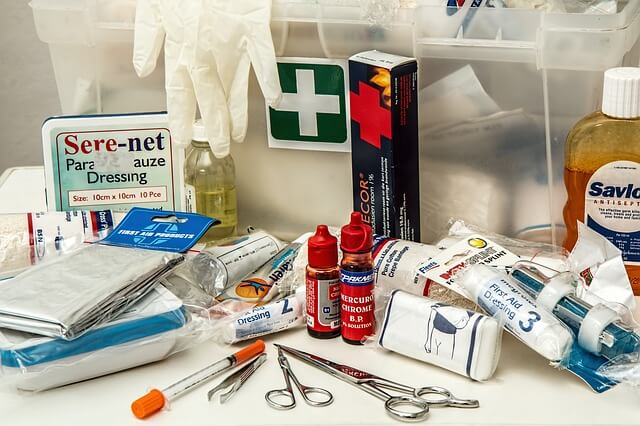
2. Stock on any prescription medicine
If you are in a medication in which the medication is not available worldwide or only with prescription, you should make sure to pack enough of it for the jungle.
3. Take a travel insurance
Considering jungle trekking is a riskier activity than, say, sunbathing, you should consider taking a travel insurance depending on your need. If you get injured or sick from jungle trekking, the insurance can cover the cost for you.
4. Build your fitness level
Jungle trekking is very physical. Expect to walk nonstop for hours in difficult environment; muddy, steep and slippery ground. There are instances when you need to climb up or down and jumping over. So, build up your physique at least two weeks before the day.
Checklist After Arriving in the Country
1. Acclimatize and adapt
If you come from subtropical country to tropical country, then takes a day or two to acclimatise with the hot and humid climate, as well as the unpredictable weather that often happens in tropical countries.
2. Read and get as much local information as possible
There are some information that you may not be able to get from the internet. Get information from locals about the jungle: what to expect, what to watch out and what to enjoy the most.
3. Get to know the people in your group
Unpredictable things happen during travel. Maybe you meet a pleasant couple or a group of cheerful youth and decide to trek together. Spend time to know your group’s overall fitness so you know how far into the forest you should go and at what speed level you should walk.
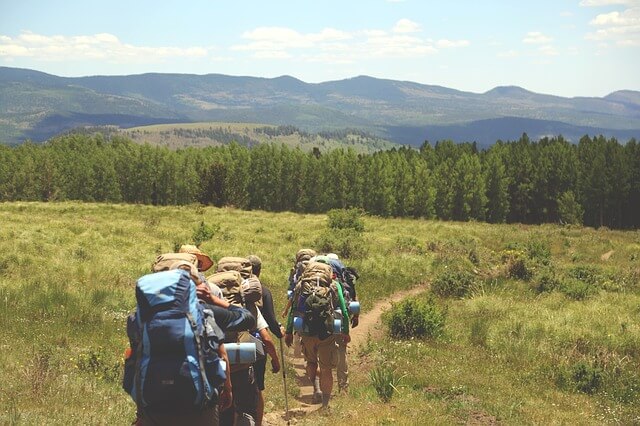
Checklist Before the Actual Trek
1. Check the weather prediction
While weather can change in a blink of an eye, especially in tropical countries, it is still wise to postpone the trek if there is a high possibility of heavy rain.
2. Never go trekking alone
Inform other people, like the people from your trekking group or your tour agent or the owner of your inn, that you’re going to the jungle and give them your intended return hour.
3. Create an Identity Card
Prepare a small card containing basic personal information:
a. Name
b. Age
c. Passport number
d. Emergency contact
4. Prepare your belonging
There’s no one to depend in the jungle except you and your group, so always be prepared:
• Reasonable amount of water
• First aid kit with your specific medicine included (if you have one)
• Food or snack
• Emergency supplies
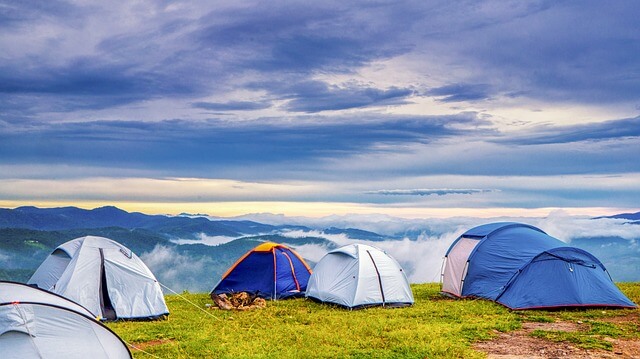
What to Pack for Jungle Trekking
Clothing
Clothing is the main layer of protection between you and the wild nature, so give a good thought on them. Always prioritize functionality over style in the jungle, you’ll meet no one except animals and plants anyway.
- Synthetic pants that is loose, thin and lights. You may think synthetic pants are hot, but they dry faster and much more lighter than cotton pants when it gets wet. Use trousers instead of shorts: they’ll protect you from crawling insects (or worse, leech) and thorny vegetation.
- Loose shirt is more comfortable and cooler than fitted t-shirt. With the same logic as choosing trousers over shorts, choose a long sleeved one. Wear cottons that absorbs your sweats. Choose a light and bright colored shirts so other people can easily find you.
- Hat is essential to protect you from sun heat, also from something that may fall from above (like caterpillar or the less harmful bird poop).
- Raincoat is important to keep you dry and warm under light shower. Plastic ponchos with bright color will help you see each other clearly even under the rain.
- Sweat-rag or hand towel is not our usual choice for fashion item, but when you drape it over your neck, it can protect the skin under. Also, you’ll sweat a lot during trekking, and having it available handily is very useful
Footwear
- Boots may sound stifling but it is necessary if you’re planning to go far or if your jungle is muddy as it offers sturdier protection than sneakers and socks. Choose waterproof boots with strong gripping sole. Don’t wear new boots – usually it will grate your skin. Tuck your pants inside the boot to ensure skin protection.
- Sneakers is lighter than boots, but only wear them for a short walk or if you’re confident the ground will be dry.
- Sandals is not a choice for trekking, but if you are staying in a camp or wanting to walk on a stream, it is handy.
- Socks is a must wear item since it cushions your feet and keeps them from blisters. In fact, double your socks in longer walk. Polypropylene socks is better than cotton socks.
Water
Water is essential for trekking. Have a water bottle ready anytime. Don’t put it too far down your backpack, you should be able to reach for it easily.
Carry water filter, iodine tablets or water purifying tablets for emergency situation when you run out of water.Check maps beforehand for possible running water sources.
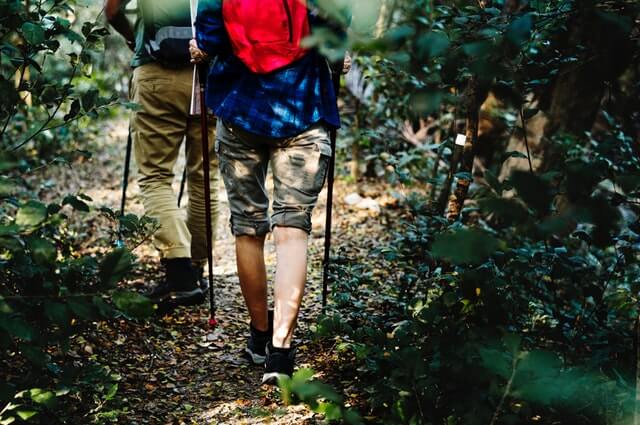
Food
For short trip, less than half a day, any food is suitable to bring. For longer trips that takes more than half a day, “wet” food will likely go stale due to the hot and humid weather.
Typical camping food like instant noodles, instant oats, instant soups and such are ideal. As a golden rule, choose foods that is nutritious, long lasting, easy to carry and easy to prepare.
First Aid Kit
You first aid kit should include these items:
– Personal medicine
– Basic medicines: paracetamol, cold and flu tablets, antihistamines, antinauseants, antidiarrhoeal
– Region-specific antibiotics like for malaria , which you can find in local pharmacy
– Rehydration mixture
– Wound care supplies: band aids, crepe compression bandage, dressings, antiseptic
– Insect repellent
– Sunscreen with SPF 30+
– Soothing creams or sprays for insect bites
– Tweezers
– Scissors
– Latex gloves
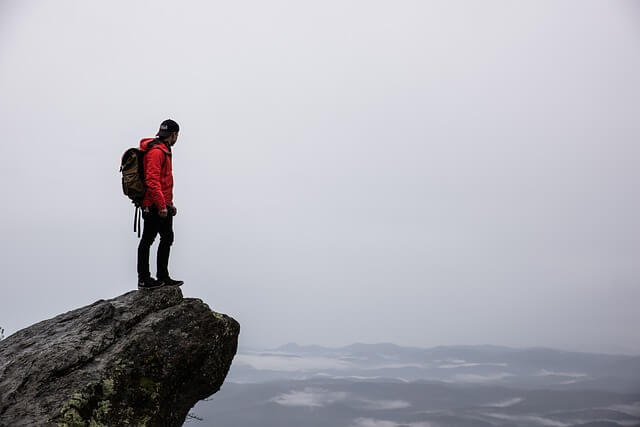
Emergency Kit
Emergency kit should include equipment that will be useful in unexpected, emergency situation, such as, when you lost your way, got separated from your group or have to stay overnight in the jungle.
– Torch
– Matches
– Candle
– Pocket knife
– Compass
– Aluminum foil
– Pen and paper
– Plastic bags
Entertainment
– Camera
– Phone (if you think you still can get receptions)
– Binoculars
The checklist above should cover any basic necessity to make your jungle trekking safe and comfortable. Do you think we leave out something? Tell us about it in the comment!
A wonderful article….great information about checklist for jungle trekking , i wants to share our blog regarding this , do visit
https://www.whistlingwoodzs.com/jungle-trekking-places-in-dandeli/